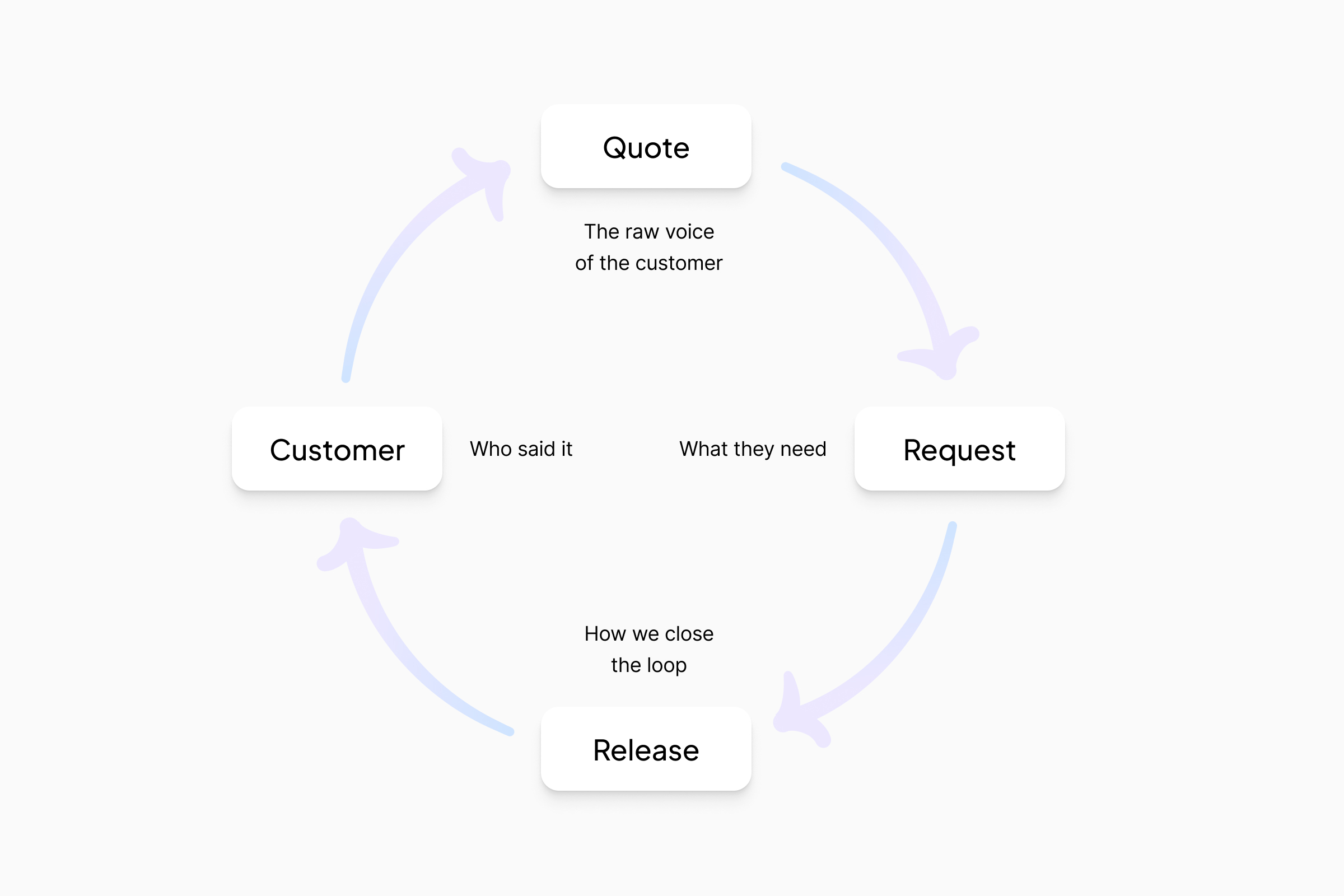Your Product Has a Dictionary
Why every great product starts with a clean object model
Most product teams think in screens. The best ones think in words. Because behind every great product is a great object model. And behind every great object model is a product dictionary.
What’s a product dictionary?
It’s the set of core concepts your users need to understand your product. Not in your marketing. Not in your onboarding. In your structure. In your logic.
Every product has one. The great ones keep it small:
→ Notion has the Page
→ Figma has the File
→ Jira has the Issue
→ ChatGPT has the Chat
→ Cycle has the Quote
(because one customer quote > a thousand data points)
That’s the atomic unit – the object everything else flows from. If your product is hard to grasp, it’s usually because you’ve lost that clarity. Too many concepts. Too many words. No dictionary.
Words come before screens
We obsess over UX. But the truth is, UX is downstream from object design. A bloated UI is usually the symptom of a bloated model.
Why? Because instead of extending existing concepts, teams often invent new ones. Every feature comes with a new term. A new object. A new tab. And users are left trying to piece together a product that feels like five stitched together.
The fix? Start with the dictionary. Before you design anything:
- What are the atomic objects in your product?
- What actions can be taken on each?
- What side effects do those actions trigger?
This approach is especially powerful when done API-first: If you can't model a feature cleanly in your API… It probably doesn't belong in your UI.

From logic → language → leverage
Thinking this way does three things:
- It makes your product easier to scale.
- Because every new feature builds on a known object instead of adding a new one.
- It makes your product easier to understand.
- Because users don’t need a dictionary and a tour. Just one.
- It aligns your team.
- Because engineers, designers, PMs, and marketers speak the same structural language.
At Cycle, this is how we build. Our atomic object is the Quote. Because customer quotes – raw, verbatim, emotional – are the most trustworthy source of truth in product development.
From there, everything flows:
→ Quotes are tied to Customers
→ Quotes are grouped into Requests (customizable to fit your team: feature requests, problems, kudos…)
→ Requests close the loop via Releases
Everything traces back to a real user and a real moment of need. That’s our dictionary. And we write it down.
TL;DR: Keep your product’s dictionary small
Most product bloat isn’t visual. It’s conceptual. So before you ask what the screen should look like… Ask: What’s the word?
If it’s a new one, think twice. If it’s one you already have, build on it. Because when your dictionary is clean, your product feels clean. And when your product feels clean – people trust it.
—
👀 What’s your product’s atomic object?
✍️ How many words are in your dictionary?
🚩 If it’s more than five, it might be time to refactor.
Let’s bring clarity back to product design – one word at a time.

